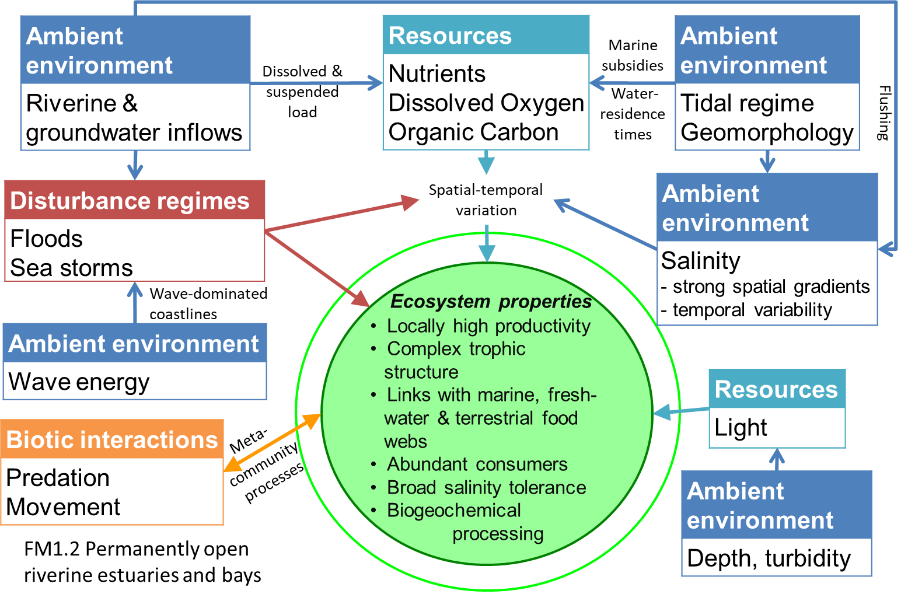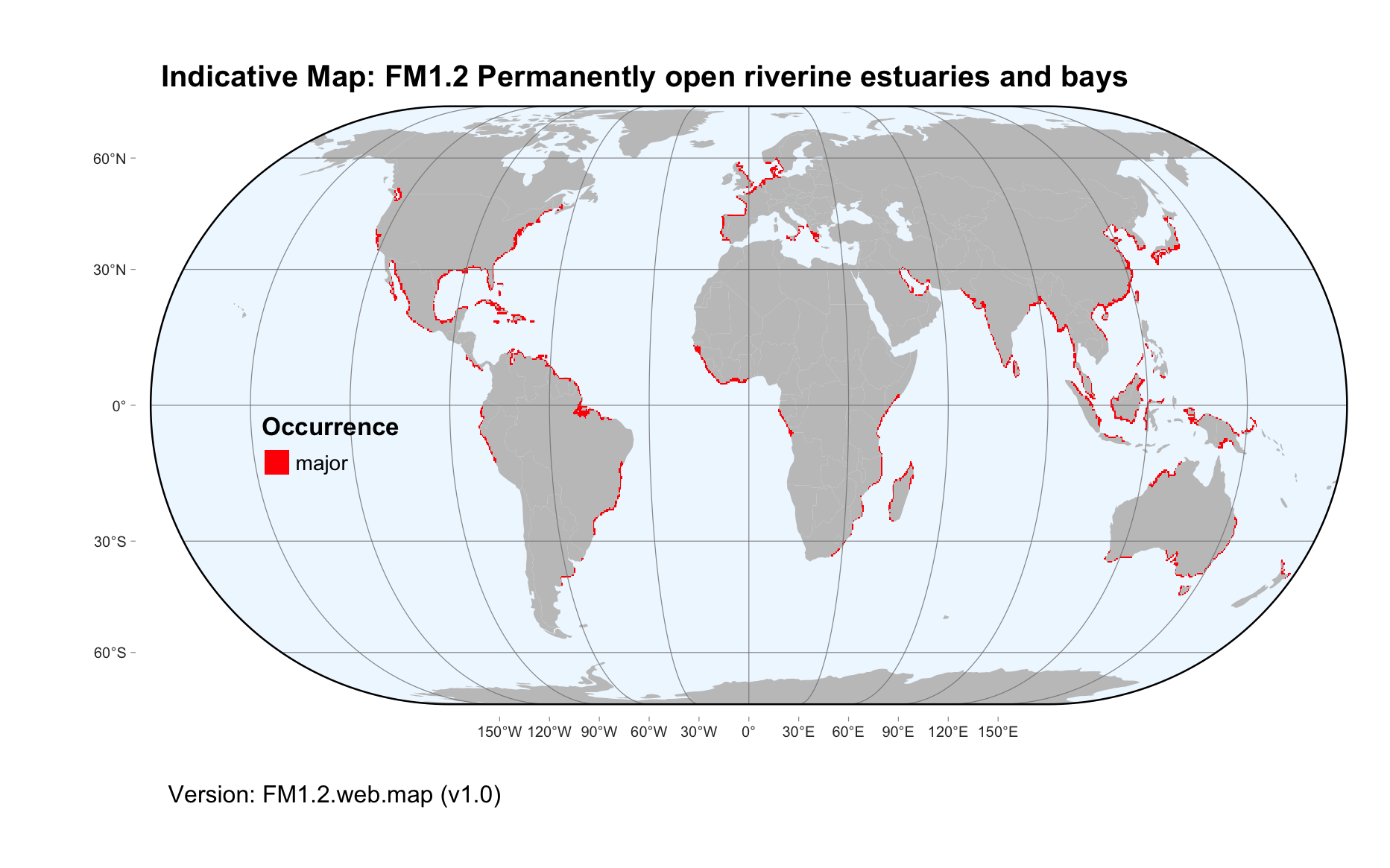Global ecosystem typology
Alternative site for the Global ecosystem typology with additional information for ecosystem profiles and indicative maps.
This site is maintained by jrfep
FM1.2 Permanently open riverine estuaries and bays
Biome: FM1. Semi-confined transitional waters biome
Contributors:
(texts)
These coastal ecosystems are shifting mosaics of different habitats, depending on the shape of the local coast, and proportional inflow of freshwater and seawater. Combined nutrients from marine, freshwater and land-based sources support very high productivity. Transient large animals like dugongs, dolphins, turtles and shorebirds feed on abundant fish, invertebrates and plant life, and they commonly serve as sheltered nursery areas for fish. Many organisms are adapted to large variations in salinity.
Key Features
Productive mosaic systems with variable salinity, often nuseries for fish and supporting abundant seabirds and mammals..
Overview of distribution
Coastlines globally.
Profile versions
- v1.0 (2020-01-20): RC Mac Nally; RT Kingsford; MJ Bishop; DA Keith
- v2.0 (2020-05-27): R Mac Nally; R Kingsford; MJ Bishop; RJ Woodland; KA Dafforn; DA Keith
- v2.01 ():
- v2.1 (2022-04-06): R Mac Nally; R Kingsford; MJ Bishop; RJ Woodland; KA Dafforn; DA Keith Full profile available at official site
Main references
Selected references for this functional group:
Gillanders BM (2007) Linking terrestrial-freshwater and marine environments: an example from estuarine systems Marine ecology (Eds. Connell, SD and Gillanders, BM). Chapter 11. Oxford University Press, Melbourne. ISBN 978-0-19-555302-4
Diagrammatic assembly model

Maps
Maps are indicative of global distribution patterns are not intended to represent fine-scale patterns. The maps show areas of the world containing major (coloured red) or minor occurrences (coloured yellow) of each ecosystem functional group. See general notes on maps.
There are 2 alternative versions of the indicative map for this functional group, please compare description and sources below.
FM1.2.IM.orig_v2.0
Datasets
- MEOW-2008
Map references
Spalding MD, Fox HE, Allen GR, Davidson N, Ferdaña ZA, Finlayson M, Halpern BS, Jorge MA, Lombana A, Lourie SA, Martin KD, McManus E, Molnar J, Recchia CA, Robertson J (2007) Marine ecoregions of the world: a bioregionalization of coastal and shelf areas. Bioscience 57: 573–583. DOI:10.1641/B570707
FM1.2.web.map_v1.0

Datasets
- MEOW-2008
Map references
Spalding MD, Fox HE, Allen GR, Davidson N, Ferdaña ZA, Finlayson M, Halpern BS, Jorge MA, Lombana A, Lourie SA, Martin KD, McManus E, Molnar J, Recchia CA, Robertson J (2007) Marine ecoregions of the world: a bioregionalization of coastal and shelf areas. Bioscience 57: 573–583. DOI:10.1641/B570707
Check: the Glossary / Profile structure / the public document